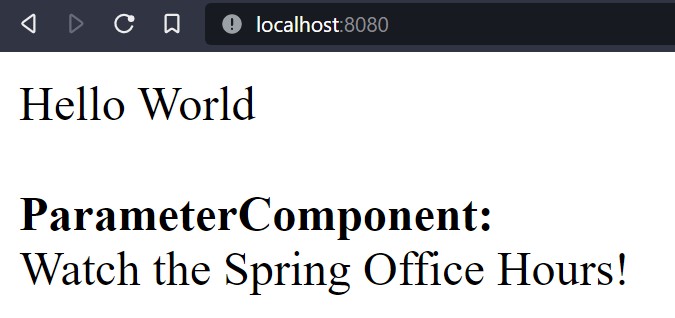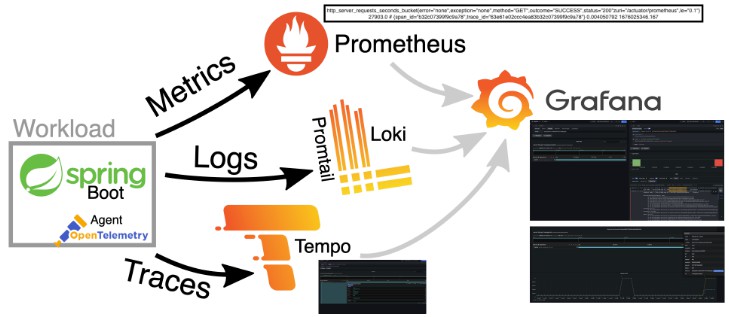Fibonacci backend service with Spring
This guide walks you through the process of creating a Fibonacci number application with Spring.
What You Will Build
You will build an backend application that will accept HTTP GET requests at: http://localhost:8080/fibonacci?n=5.
It will respond a static page that body will contain a n. fibonacci number. If the n is greater than 46 then return BAD REQUEST (500) response code.
The Fibonacci number are represented with the next expression:
f(n) = f(n - 1) + f(n - 2)
Especially:
f(1) = 0
f(2) = 1
f(3) = 1
f(4) = 2
f(5) = 3
f(6) = 5
...
What You Need
- Create a GitHub account if you do not have yet: https://github.com/signup
- Java RE Version 11: https://www.oracle.com/java/technologies/javase/jdk11-archive-downloads.html
- Gradle Version: https://gradle.org/releases/
- Visual Studio Code: https://code.visualstudio.com/download
Steps
Next steps help to build the Fibonacci application.
1. Fork the application
- Log in onto GitGub account to fork this application.
- Click on fork button top left on this page.
- Select destination project on your own.
- Start the development to follow the next instructions. Happy coding!
2. Develop Fibonacci application
The layers are shown on the next diagram.
2.1. Modify the Controller layer
In Spring’s approach to building web sites, HTTP requests are handled by a controller. You
can easily identify the controller by the @RestController annotation.
@GetMapping(value = ["fibonacci"])
open fun fibonacci(@RequestParam n: Int): Int? {
// TODO - If n is greater than 46 then return BAD REQUEST use HttpStatus
return fibonacciService?.fibonacci(n)
}
This controller is concise and simple, but there is plenty going on. We break it down step by step.
The @GetMapping annotation ensures that HTTP GET requests to /fibonacci are mapped to
the fibonacci() method.
The @RequestParam binds the value of the query string parameter n into
the n parameter of the fibonacci() method. This query string parameter is
required.
The point is that the controller layer call the service layer and return the business result of fibonacci calculation.
2.2. Modify Service Layer
Service layer are placed under service package. In Spring’s approach to build business tier is used with @Component or @Service annotations. In business function should be implemented the above-mentioned Fibonacci number service, that return the n. Fibonacci number.
Implement the Fibonacci algorithm under the next code:
fun fibonacci(n: Int): Int {
return if (n == 1) 0
else 0 // TODO instead of this logic implement fibonacci
}
2.3. Run the Application
After you complete the task you can run the application with the next Gradle command.
./gradlew.bat bootRun
3. Test the Application
Following the guideline test the application with two aspects
- With unit tests let us test the service layer. Test the normal cases:
f(1), f(2), ...and edge cases:f(-1). - With integration tests let us test controller layer with connected business tier. The the edge case too:
f(47).
3.1. Unit tests
Example to test application with JUnit:
@Test
void shouldReturn0WhenCall1() {
// given
// when
Integer result = underTest.fibonacci(1);
// then
Assertions.assertEquals(0, result);
}
3.2. Integration tests
Example to test controller layer with JUnit
@Test
void callFibonacciEndpoint() {
// given
// when
ResponseEntity<String> entity = restTemplate.getForEntity("http://localhost:8080/fibonacci?n=5", String.class);
// then
Assertions.assertEquals(HttpStatus.OK, entity.getStatusCode());
Assertions.assertEquals("3", entity.getBody());
}
3.3. Manual test
Now that the web site is running, visit http://localhost:8080/fibonacci?n=10, where you should
see “55”





